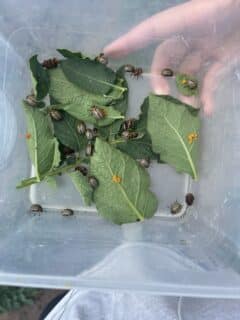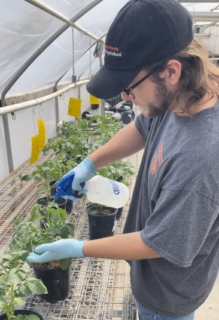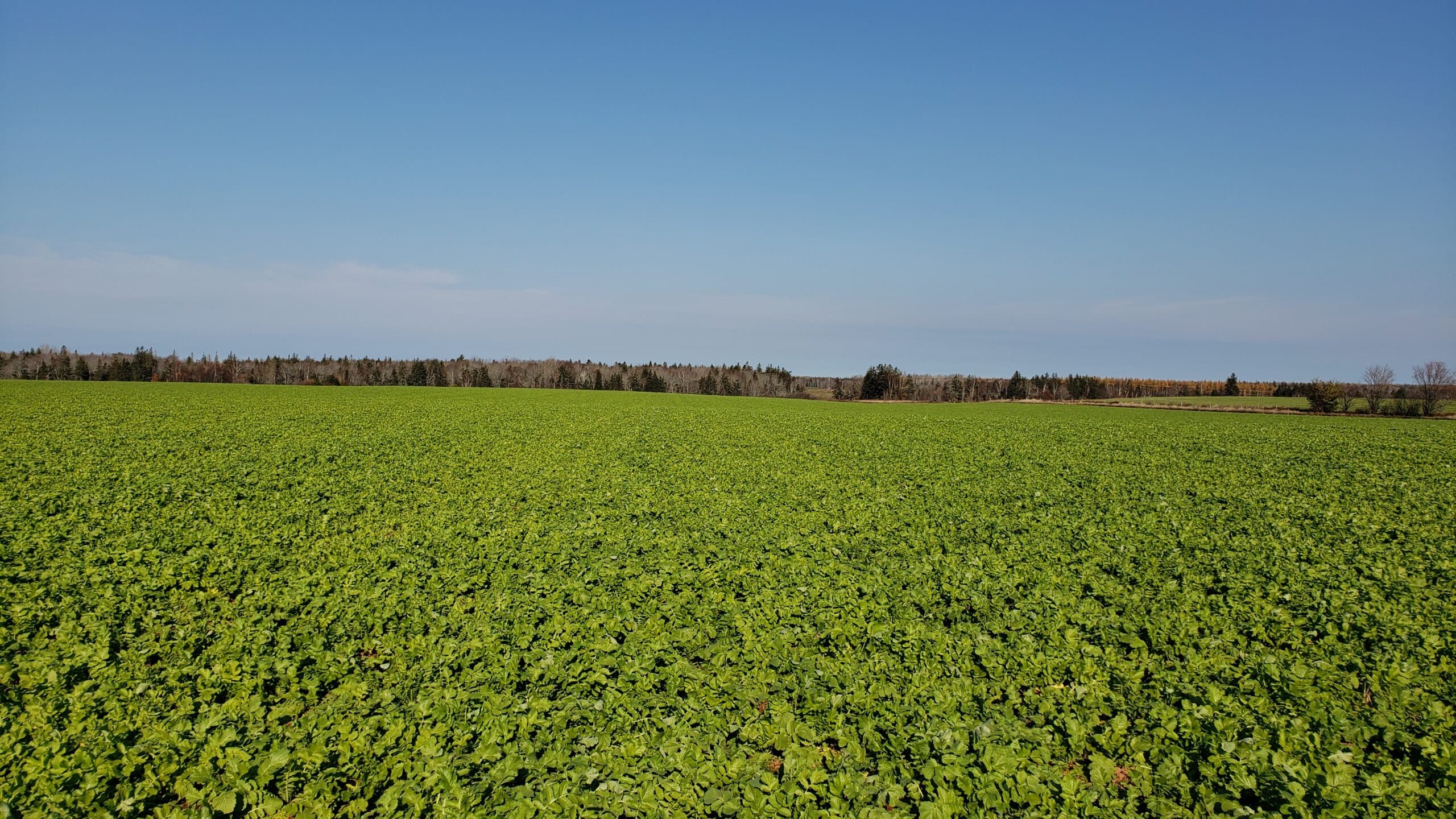A highlight reel of the latest potato research projects presented at the 2023 PAA annual meeting.
Potato researchers across North America are working every day to learn more about spuds. From agronomic research on cover crops and variable rate seed spacing to learning more about the pests and diseases that can wreak havoc, they strive to find better ways for growers to produce this important crop.
At the 104th annual Potato Association of America annual meeting held in Charlottetown, P.E.I. from July 23 to 27, 2023 approximately 320 attendees gathered to learn about the latest in North American potato research. Spud Smart attended the conference and while there were many research projects presented, here are a few which caught our interest.
Increasing Crop Value with Cover Crops
Through a 2019 to 2022 study on Prince Edward Island through the Living Labs Atlantic initiative, researchers were able to show cover crops can help increase potato yields and crop value in Eastern Canada. The research team of Ryan Barrett and Morgan McNeil conducted on farm trials in 23 fields over four years.

In each field, one or more fall seeded cover crops were planted along with a no cover control strip in the year before potatoes were to be planted. Cover crops included barley, oats, spring wheat, oilseed radish, tillage radish, brown mustard, along with mixtures of these species. Most were established following termination of a forage crop and tillage in August or September. Fields were analyzed for soil chemistry, soil health, soil nitrates at three depths, soil erosion potential, root lesion nematodes, Verticillium, soil compaction and potato yield and quality.
No statistical differences were observed for soil nutrients, soil health metrics, root lesion nematodes, Verticillium or soil compaction over the four years.
“I’m not going to hang my hat on this by any means. They’re positive trends that we’re going to follow up on in future research over longer periods of time with a higher sampling density,” Barrett, research and agronomy specialist with the P.E.I. Potato Board, said during his presentation.
However, there was a 38 to 41 per cent decrease in soil nitrates in the zero to six inches of the soil in the cover crop treatments compared to the no cover control. An average potato yield increase of 32 cwt per acre and crop value increase of $536 per acre was recorded. Barrett noted the yield increase more than compensated for the cost of planting a cover crop.
Mapping Colorado Potato Beetle Insecticide Resistance
Decades of continuous neonicotinoid use on conventional potato crops in Wisconsin, it has caused neonicotinoid resistant in populations of Colorado potato beetles (CPBs), non-target effects and environmental contamination. The resistance poses a threat for the rapid and repeated potential emergence of insensitivity to organic insecticides on CPBs.

“We’ve moved through many of the major classes of insecticides with… significantly increasing number of insects becoming resistant to each of these different classes,” Emma Terris, a masters student at the University of Wisconsin – Madison, explained during her presentation. “Today we have more than 853 resistant insects to at least one class of insecticides — this is a significant problem for growers.”
To evaluate the CPB resistance, dose-response assays and RNA sequencing tests were done by the research team of Terris, Russell Groves and Sean Schoville. The research showed diverse and infrequent pesticide use is results in slower development of CPB’s resistance and less risk of cross-resistance among different compounds on potato farms.
Treating Common Scab and Early Blight with Thiamin
Thiamin, also commonly referred to as vitamin B1, is a water-soluble vitamin produced naturally in plants. In previous studies it has been shown to activate plant immunity in several species and can effectively control fungal, bacterial and viral diseases.
“In each of these examples, plants that were treated with a thiamin foliar application had reduced disease severity or incidence compared to plants that were treated with a mock solution of just water and a surfactant. What we don’t know is whether this works in potato,” Trent Berrian, botany and plant pathology master’s student at Oregon State University, said during his presentation.

During the project, potatoes were applied with thiamin and tested against Streptomyces spp. that causes common scab and Alternaria solani which causes early blight. The research team of Berrian, Christopher Clarke and Aymeric Goyer used two common scab susceptible potato varieties, Huckleberry Gold and Purple Viking, in their trials.
Potatoes were planted in a field with high disease pressure in a randomized block design with 20 plants per treatment and four replicates. Leaves were sprayed with 30 millilitres of thiamin or a mock solution during tuberization every other week for nine weeks. In a greenhouse Purple Viking was also planted in pots with a known number of bacteria and given thiamin through a foliar spray or soil drench weekly until harvest. At harvest, tubers were scored for disease incidence and severity. There was no difference between thiamin treated and the mock controls in field trials with foliar application. However, drench treatments done in greenhouse trials showed a reduction of disease severity.
For early blight, leaves of five- to seven-week-old Russet Norkotahs were grown in a greenhouse and sprayed with thiamin or a mock solution. The leaflets were detached, drop inoculated with 20,000 to 30,000 spores per millilitre of Alteraria solani and incubated for three days at 22C under a 10-hour photo period. There was a 32 to 52 per cent decrease in lesion area following 10 millimolar thiamin applications compared to mock controls. Berrian noted this indicates thiamin might be effective for decreasing disease symptoms.
Managing Potato Skin Blemishes
With fresh potatoes such as Dark Red Norland, the goal is to have nice clear tuber skin. However, skin blemishes like surface cracking, silver patch and russeting can negatively impact the visual appeal of the potato, reducing marketability. A three-year field study done by Peak of the Market in Manitoba and Dalhousie University looked at the impact of water and heat stresses on the potato variety’s skin quality and yield. Plants were treated under combined irrigation and heat stress conditions.
“Potato is a sensitive plant to many environmental stresses such as drought and heat — limited irrigation can decrease plant growth, tuber yield, tuber numbers, tuber size and tuber quality. And no irrigation at tuber initiation stage can result in increased external defects,” Manlin Jiang, a master of science student at Dalhousie University, said during her presentation.

The research team of Jiang, Tracy Shinners-Carnelley, Darin Gibson, Debbie Jones, Jyoti Joshi, and Gefu Wang-Pruski found that irrigation increased the total yield by approximately 21 per cent and reduced severity of surface cracking by about 48.5 per cent. Tubers in rainfed trials formed more suberized cell layers than those of the irrigated trials in potatoes with normal skins without skin blemishes. A significantly higher number of total polyphenols was found in the irrigated samples with a mean of 77.3 mg gallic acid equivalents per 100 grams fresh weight compared to the rainfed samples.
Under irrigation heat stress during the tuber initiation stage significantly increased the occurrence of sliver patch by 30 per cent and decreased the likelihood for normal-skinned tubers by around 43 per cent in 2021. Dark Red Norlands under heat stress at the tuber skinset stage without irrigation formed more suberized cell layers in the tuber skins.
Greenhouse data indicated a higher incidence of normal-skinned tubers when plants were grown in a cooler greenhouse. Tubers positioned in the top and side positions in pots showed more sliver patches on skins compared with those in the centre of the pots. More silver patch was found on the bottom half of the harvested tubers in the greenhouse trials. Jiang noted this study could potentially help potato growers improve tuber skin quality and minimize market loss.
Increasing Profitability with Variable Rate Seed Spacing
To improve sustainable potato production through better managed crop inputs, it’s important to understand soil characteristics. Soil, Water and Topography Maps (SWAT MAPS) using electrical conductivity (EC) information about soil can map out differences in soil texture, water holding capacity, soil organic matter and more. This information can allow for site-specific production management including variable rate (VR) seeding of potatoes.

Current potato planting technology allows for automatic adjustments to seed and fertilizer rates according to management zones within the field. VR seeding allows for increased profit margins by managing risks and lowering production costs in poorer preforming areas of a field while at the same time maximizing production in areas with greater soil potential.
Six fields in P.E.I. were studied over 2021 and 2022 by Evan MacDonald and Aitazaz Farooque. It was found that VR seed spacing of potatoes can increase profits by $300 per acre. VR seeding and fortification can also help mitigate environmental impacts of fertilizer over application in low productivity areas of fields. MacDonald notes this will help growers to reduce greenhouse gas emissions making for more sustainable potato production.
“I’ve heard from some growers, ‘Well your numbers look good because they’re good years.’ But I would argue that you’re probably going to see more benefit on the dry year by spacing things out a little bit further on our sandy knolls,” MacDonald, a PhD student at the University of P.E.I., explained during his presentation.
Header photo — A cover crop of daikon radish planted as part of Ryan Barrett’s research project. Photo: Ryan Barrett
Related Articles
PAA Conference Sees Rising Demand to Share Potato Research









